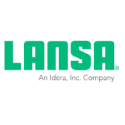Several companies believe SSD technology is ready for mission-critical data.
Those handy little flash drives are as common today as floppies used to be, and laptops, such as the recently announced 17-inch Apple MacBook Pro, are offering optional, if a bit pricey, 256 GB solid-state drives (SSDs). So when will SSDs be ready for enterprise computing? Turns out they are already here.
Limited write cycles, drive size, higher cost per gigabyte of solid-state drives compared to conventional hard drives, and even the inability of today's operating systems to properly manage them have all slowed the introduction of SSDs. However, SSD prices are coming down by about 50 percent a year while their capacity is doubling in the same period of time.
Earlier this month, Hewlett-Packard announced the HP StorageWorks IO Accelerator, an enterprise flash drive especially designed to attach to a blade server. The IO Accelerator is offered in three sizes: 80GB, 160GB, and 320GB. The drive serves over 100,000 IOPS and up to 800MB/s in bandwidth. IBM offers a line of new SSDs on select blade servers that it says offer higher reliability, durability, and power savings over conventional drives. The SATA-based drivers are in the realm of 15GB. At this year's CeBIT conference and exhibition in Germany, OCZ was reported to have demonstrated a 1TB flash SSD drive that uses the PCI Express x8 interface. The drive had a minimum read speed of 654MB/s and a maximum read speed of 712MB/s.
Not all SSDs are alike, and some are designed to last longer than others. Their inherent weakness is that they break down over time from the repeated data write and erase process. While this characteristic is dependent to some extent on their design, it can be managed and reduced in other ways--for example, by writing data evenly across the entire drive (called wear leveling). Windows 7, now in beta, will include features that make reading and writing data to SSDs more efficient and cause less wear and tear to the drive.
Pillar Data Systems is an eight-year-old San Jose-based company that develops storage systems for midsize and enterprise organizations. The Pillar Axiom solutions are among the most efficient storage systems on the market, according to the company, which claims they cut the total cost of storage by half compared to other solutions. The company announced this week that it is introducing SSD technology into its Pillar Axiom storage system.
"In support of Pillar's promise to drive innovation and help customers maximize ROI, we're making SSD technology affordable," said Mike Workman, CEO and chairman of Pillar Data Systems." Workman says that recent tests show that Pillar Axiom has become "the most efficient, best-performing storage system in its class." In a recent SPC-1 Benchmark test, Workman says that Pillar Axiom came out in first place in overall performance and price/performance among similarly priced and configured products from EMC, IBM, and NetApp. The company's products compete against those from EMC, IBM, NetApp, Hitachi Data Systems, 3PAR, Isilon, BlueArc, and Compellent in the midrange storage hardware industry.
The firm, which today has about 500 employees, was founded by Workman, former vice president of the Storage Systems Division at IBM. Workman holds both a PhD and an MS in electrical engineering from Stanford and a BS degree, also in electrical engineering, from U.C. Berkeley. Pillar Data Systems is funded by Tako Ventures, LLC, the venture arm of Larry Ellison, CEO and founder of Oracle.
The company's claim to fame is that it allows companies to simplify data management by consolidating storage into one storage pool. Its platform unites both SAN and NAS environments and enables the management of tiered storage on a single platform. Axiom supports any combination of iSCSI SAN, Fibre Channel SAN, and NAS, according to the firm. It offers what it calls "application-aware" storage systems that differentiate services based on application priority. Users can match multiple application characteristics to the appropriate service levels within a single storage platform.
One of the inherent problems in using SSDs for enterprise storage is that, while having very fast, nonvolatile storage available would seem an advantage, being able to exploit it is another matter altogether. There are few tools that easily allow an administrator to make sure the most performance-sensitive, mission-critical data reside on the SSDs. What the Pillar Axiom system does is allow administrators to prioritize data. They define the type of application and its value to the business through a menu, and the system automatically tunes itself to deliver differentiated storage service levels, based on the business priority of each application. Those storage service levels include determining which drive type--SSD, Fibre Channel, or SATA--will be used to write the data on.
According to Joseph Unsworth, research director at Gartner Inc., there are performance benefits when SSDs are properly managed, but that management has to be present. "When SSDs are managed and optimized properly, it is clear that they provide compelling performance benefits," he says. "In order to fully exploit the technology, users need something that will differentiate data type and tier it accordingly," he says.
According to Pillar Data, most storage systems today treat different drive types equally, and the benefits of SSDs are negated. Administrators might want to take a look at SSDs again, however, because they can do more than improve performance; they may also reduce energy use, depending on design. Low-capacity flash SSDs typically have low power consumption and emit little heat. High-end SSDs and DRAM-based SSDs, on the other hand, generally have considerably higher power requirements.
One of Pillar Data Systems' customers, Hilton Reading, vice president of IT and CIO of Skyservice Airlines, a Canadian charter airline, said, "We initially chose the Pillar Axiom over other storage systems because of its exceptional efficiency and price-performance advantage. Bringing SSD technology into the Axiom should significantly extend that proposition and provide the ability to maximize performance while slashing energy consumption."
Regardless of whether it's an IBM or HP SSD or Pillar Data Systems' advanced Axiom storage solution, it appears that SSDs are a significant trend and provide an alternative to electro-mechanical hard drives. Because of the low storage cost of today's hard drives, however, it may be quite awhile before today's drives are replaced by SSDs.












 Business users want new applications now. Market and regulatory pressures require faster application updates and delivery into production. Your IBM i developers may be approaching retirement, and you see no sure way to fill their positions with experienced developers. In addition, you may be caught between maintaining your existing applications and the uncertainty of moving to something new.
Business users want new applications now. Market and regulatory pressures require faster application updates and delivery into production. Your IBM i developers may be approaching retirement, and you see no sure way to fill their positions with experienced developers. In addition, you may be caught between maintaining your existing applications and the uncertainty of moving to something new. IT managers hoping to find new IBM i talent are discovering that the pool of experienced RPG programmers and operators or administrators with intimate knowledge of the operating system and the applications that run on it is small. This begs the question: How will you manage the platform that supports such a big part of your business? This guide offers strategies and software suggestions to help you plan IT staffing and resources and smooth the transition after your AS/400 talent retires. Read on to learn:
IT managers hoping to find new IBM i talent are discovering that the pool of experienced RPG programmers and operators or administrators with intimate knowledge of the operating system and the applications that run on it is small. This begs the question: How will you manage the platform that supports such a big part of your business? This guide offers strategies and software suggestions to help you plan IT staffing and resources and smooth the transition after your AS/400 talent retires. Read on to learn:
LATEST COMMENTS
MC Press Online